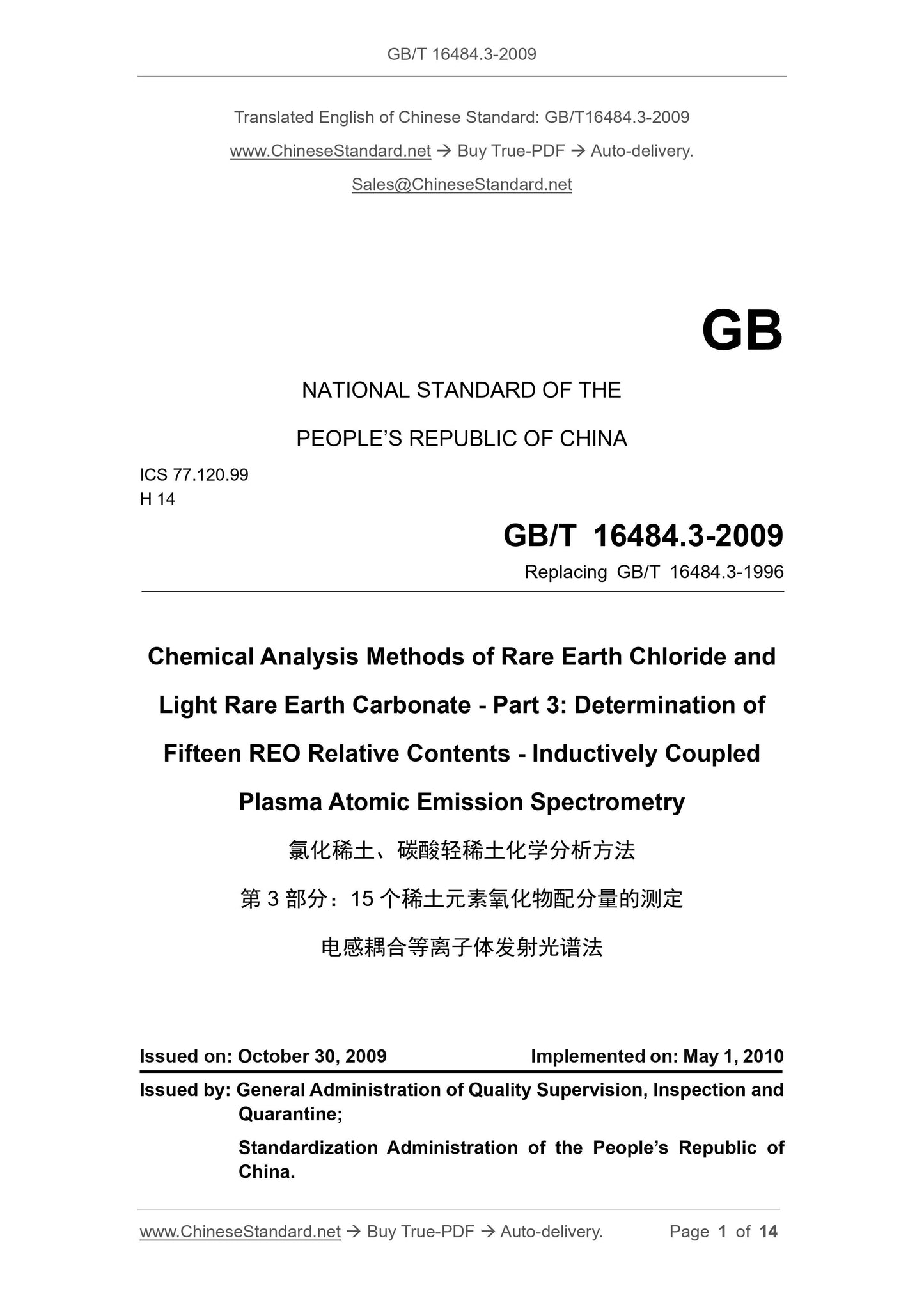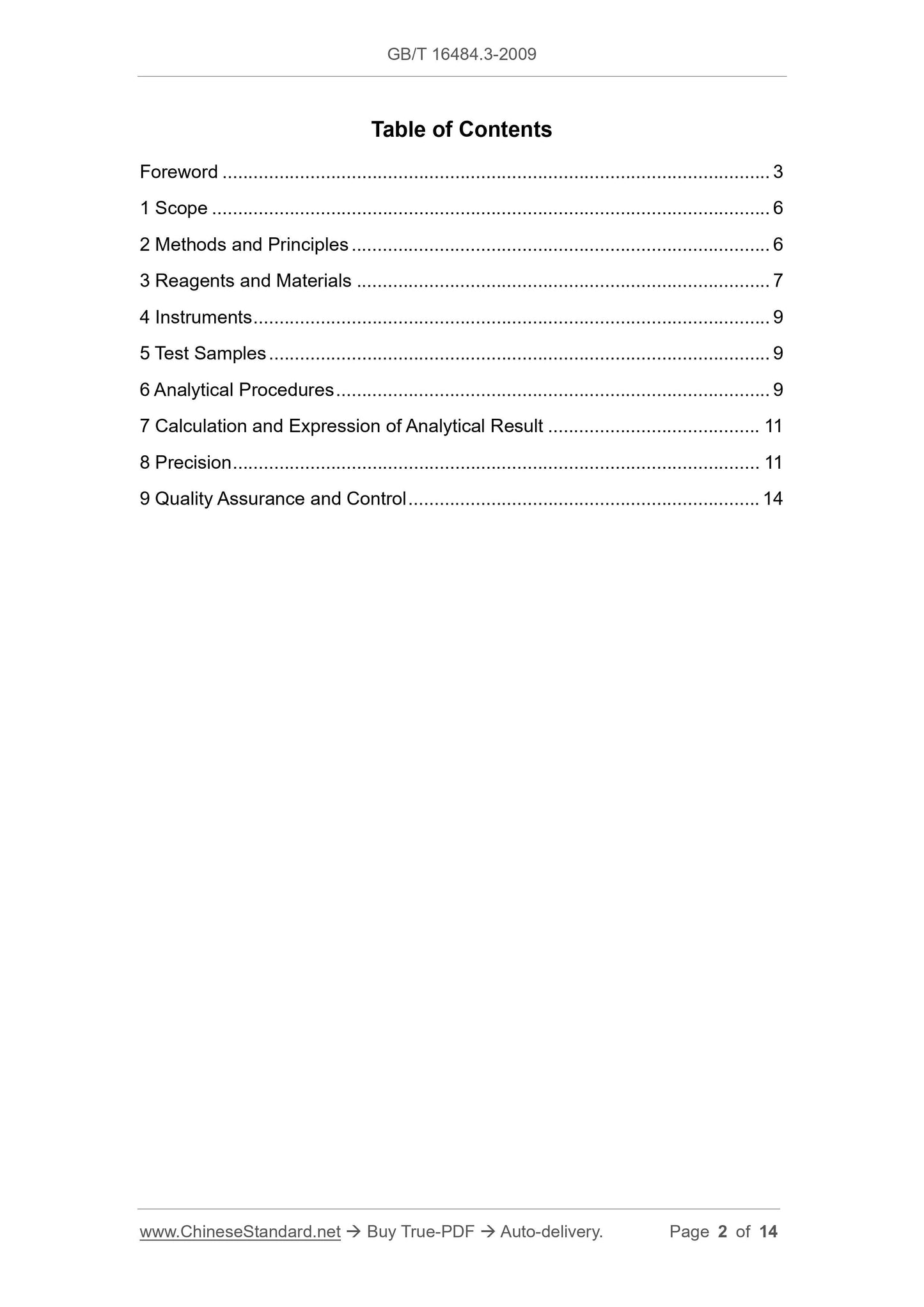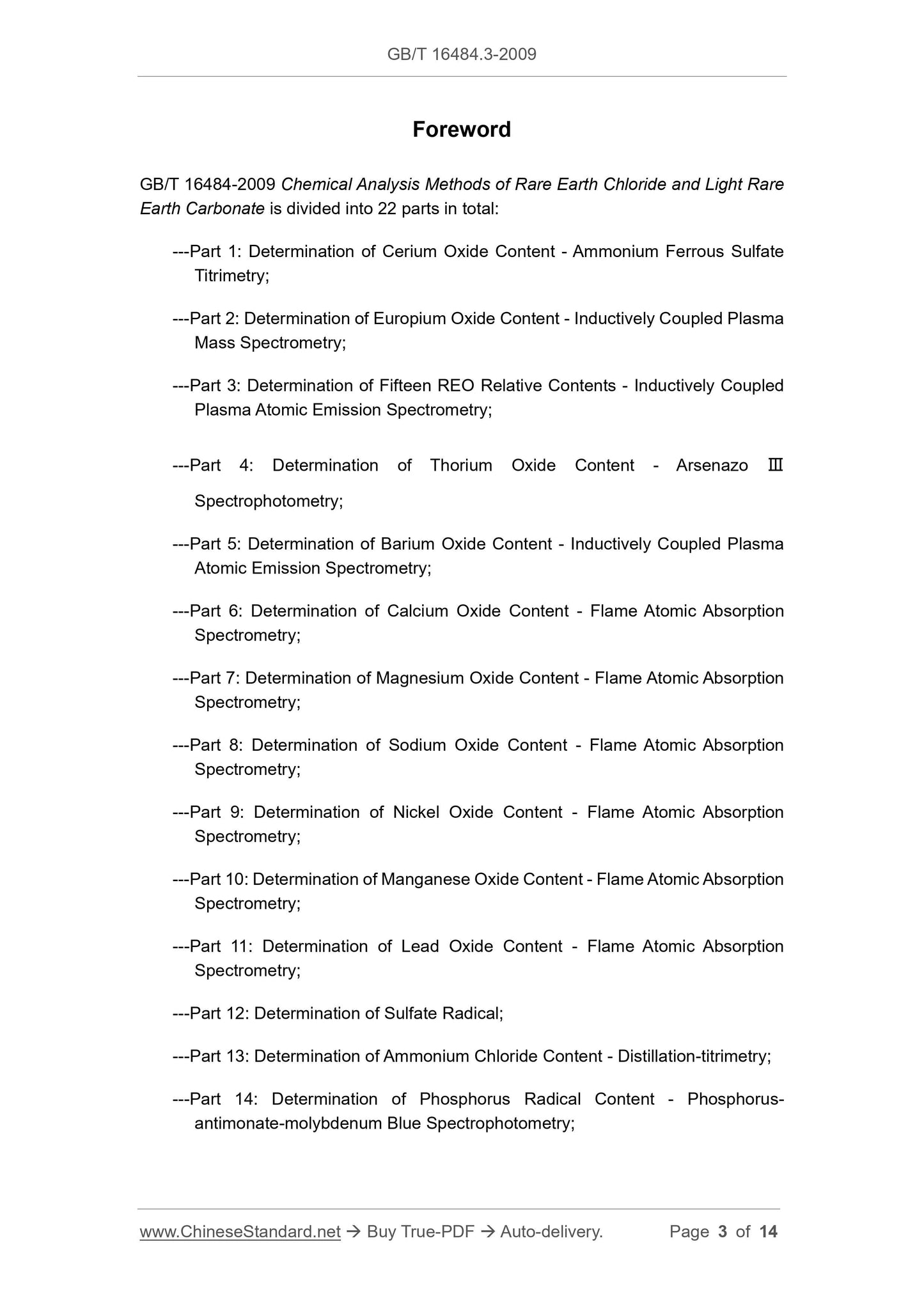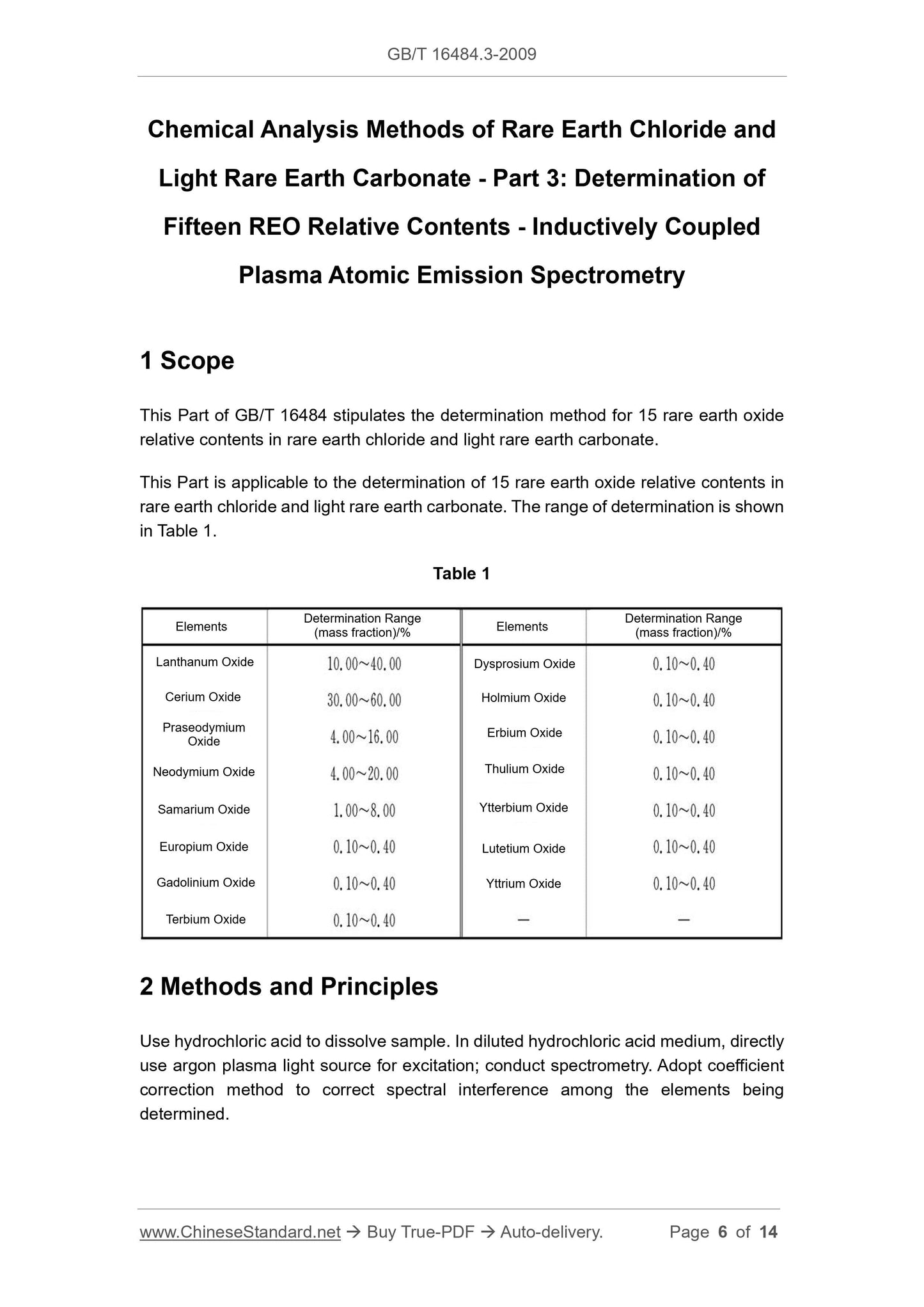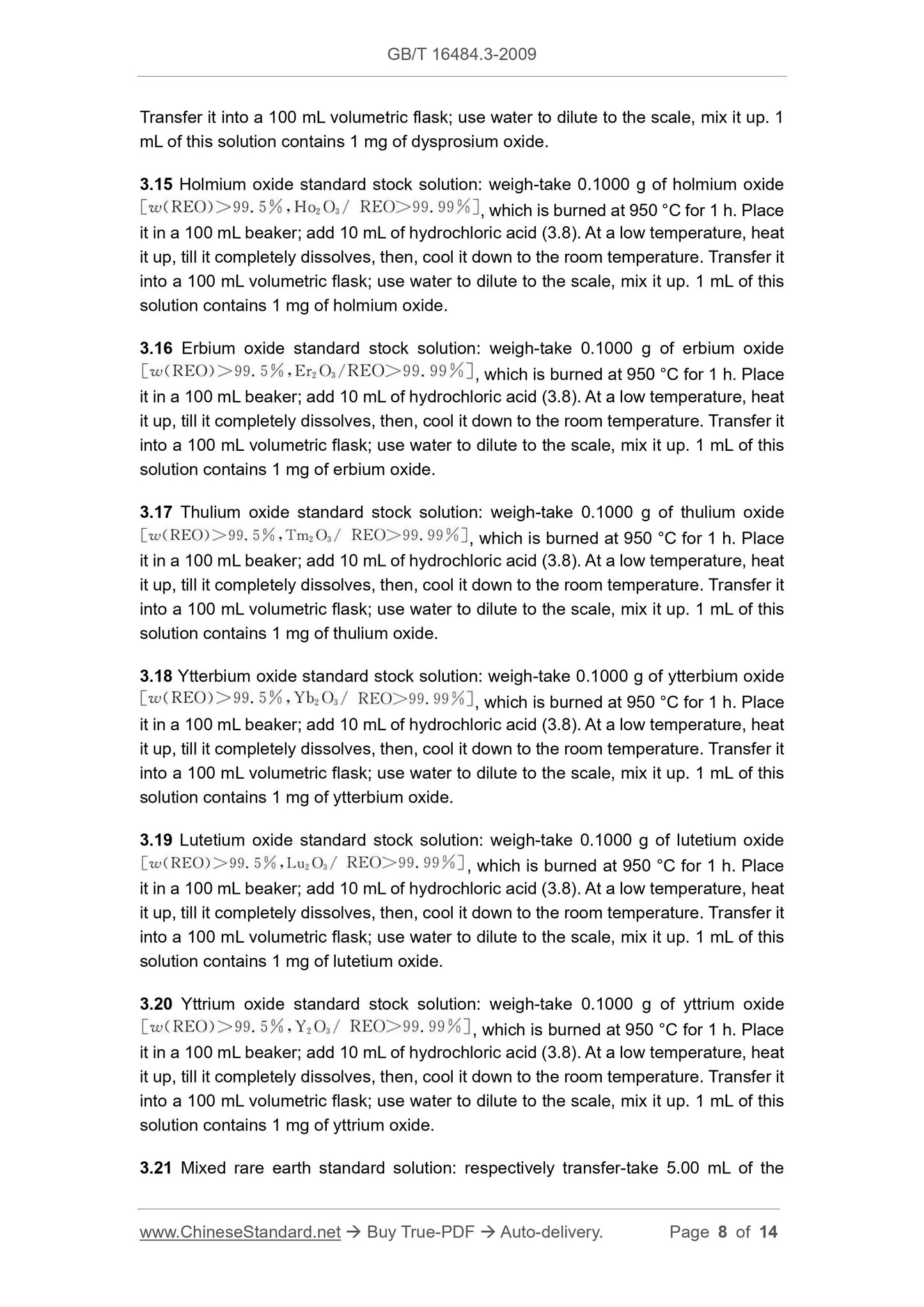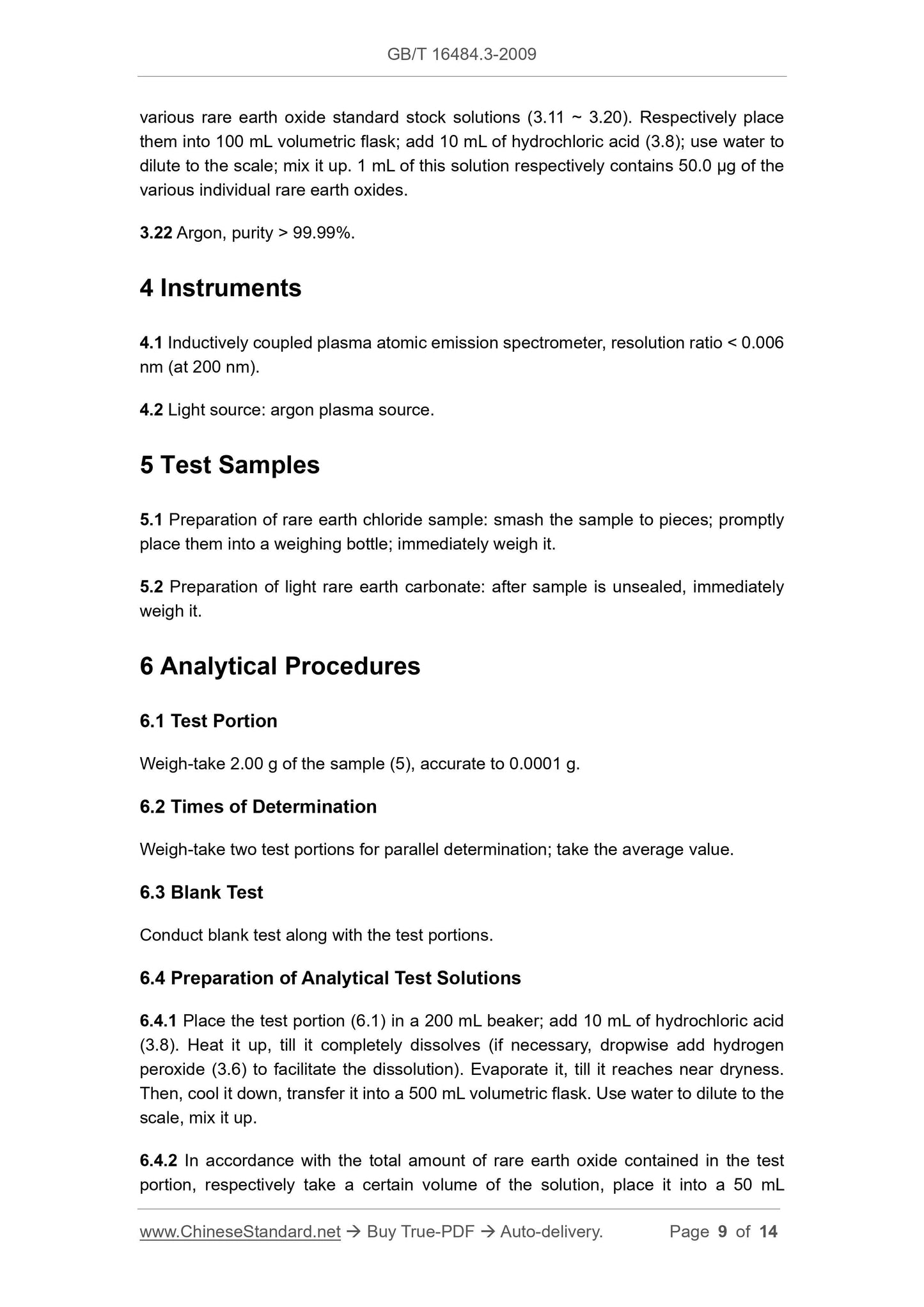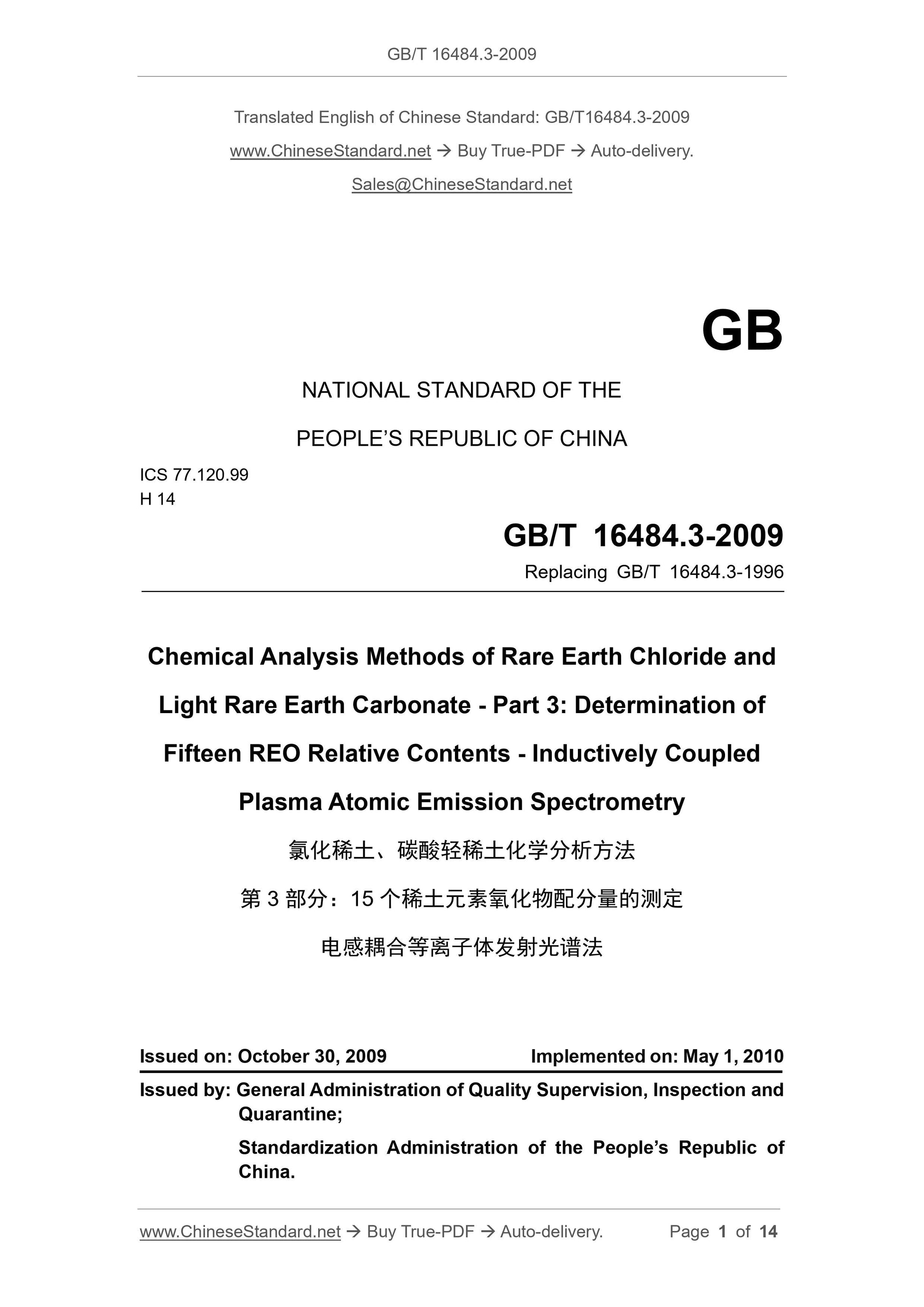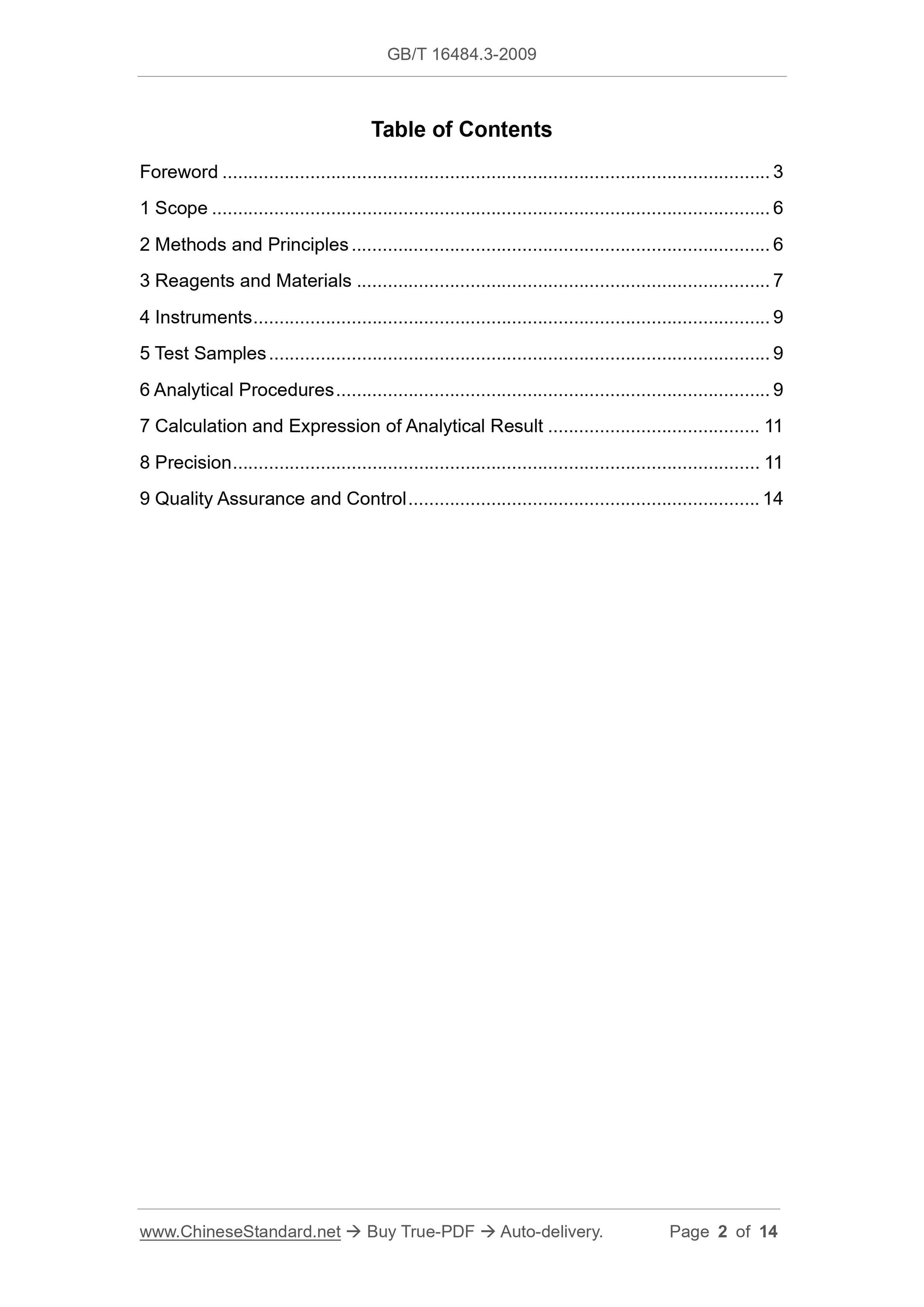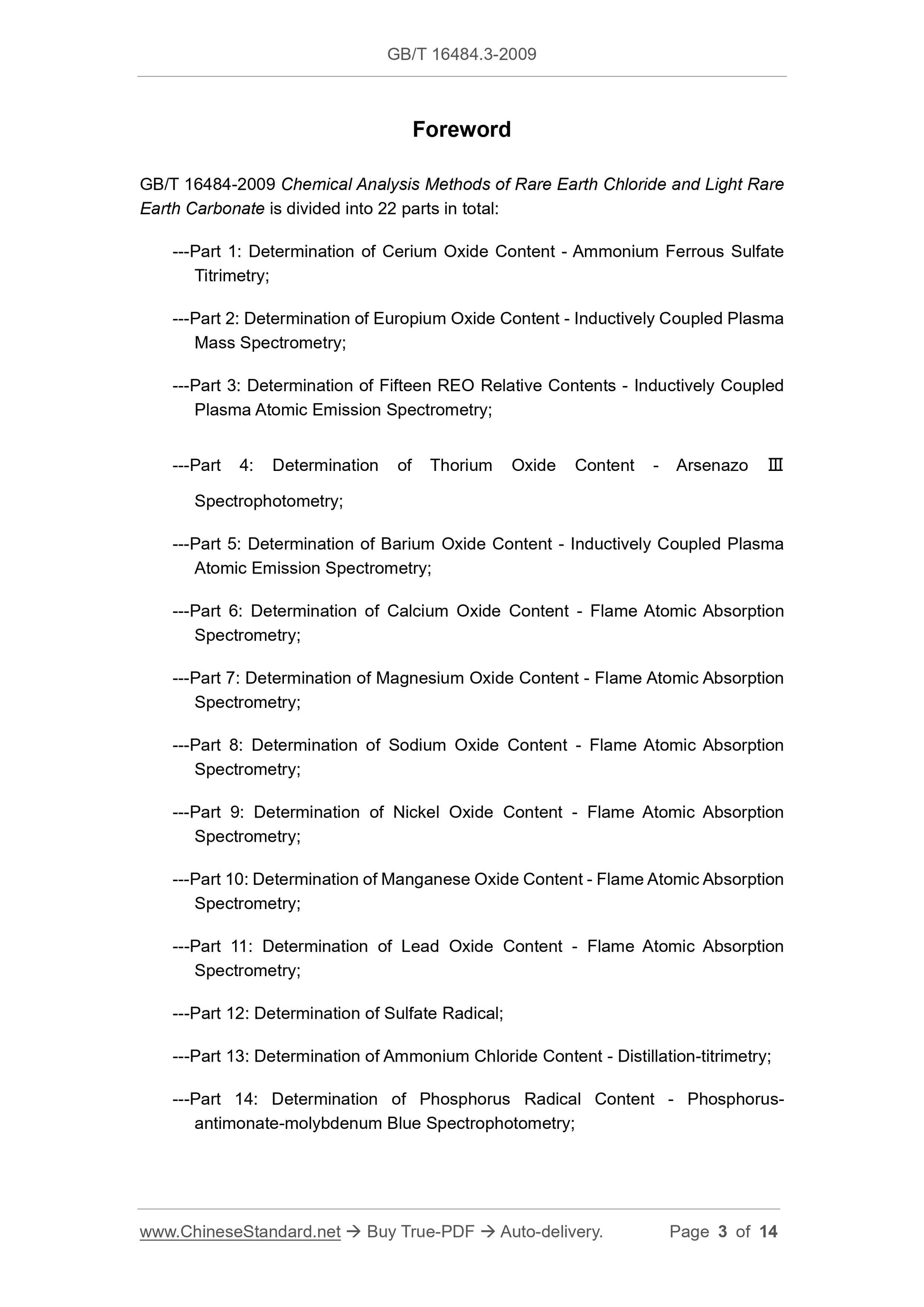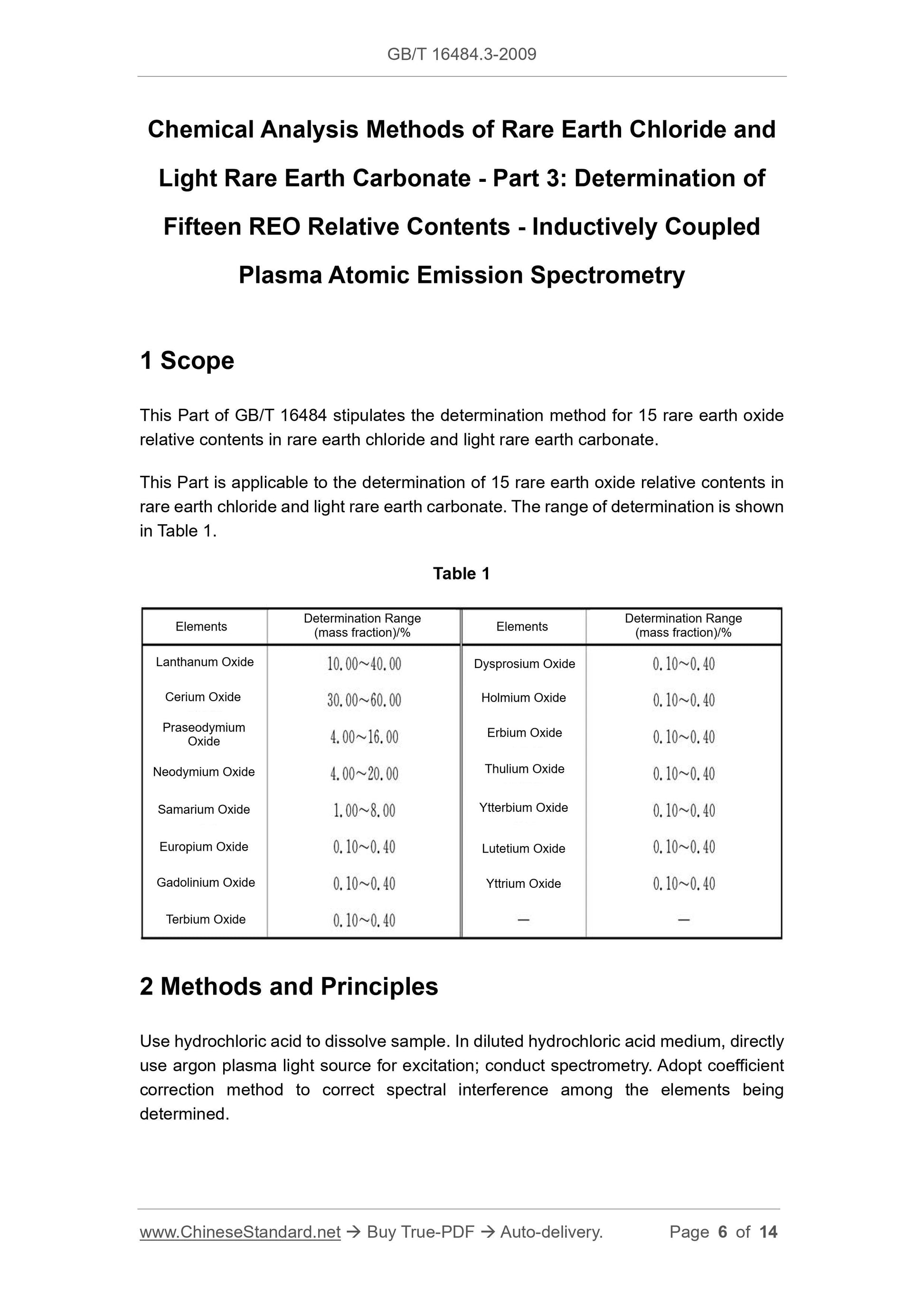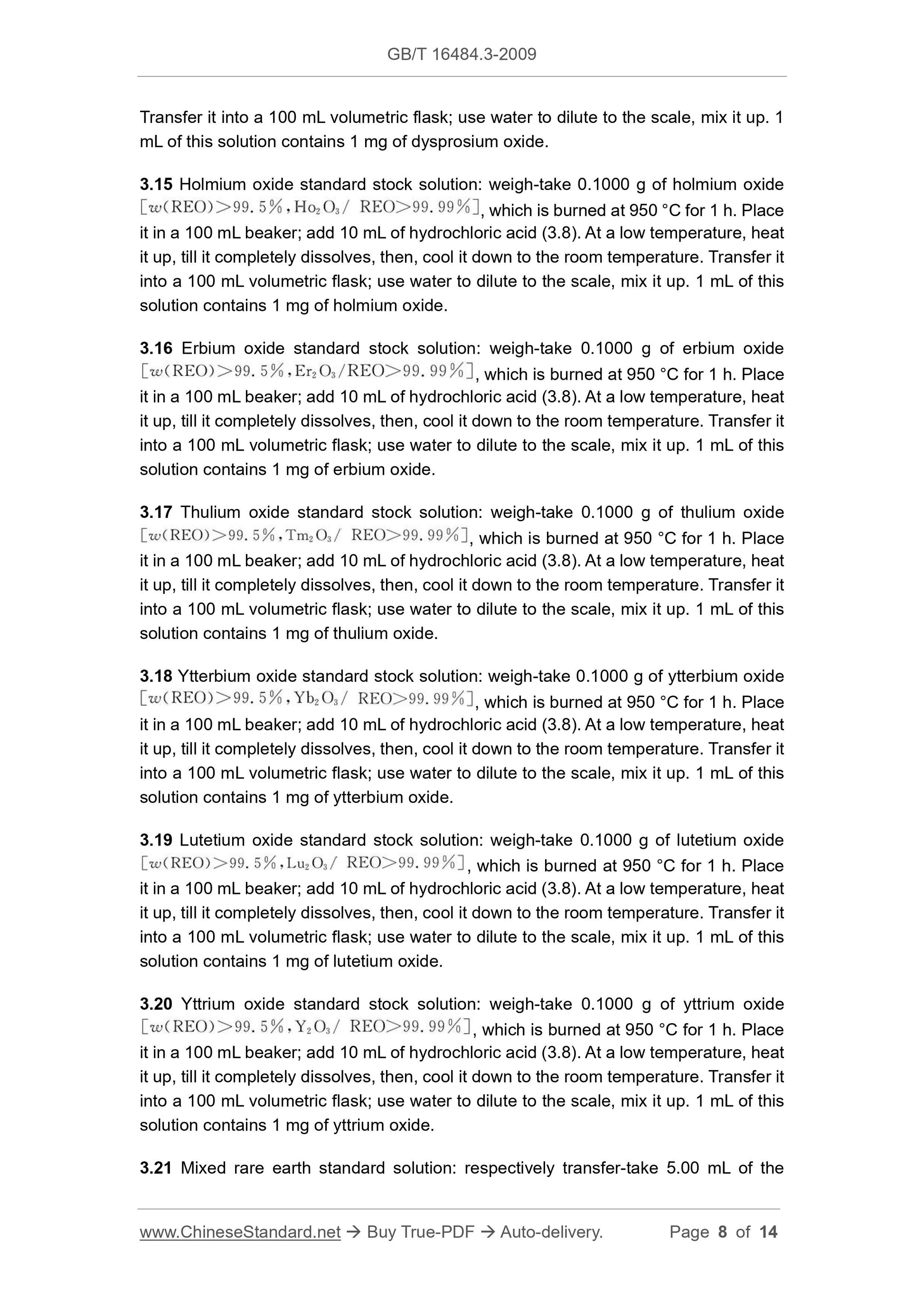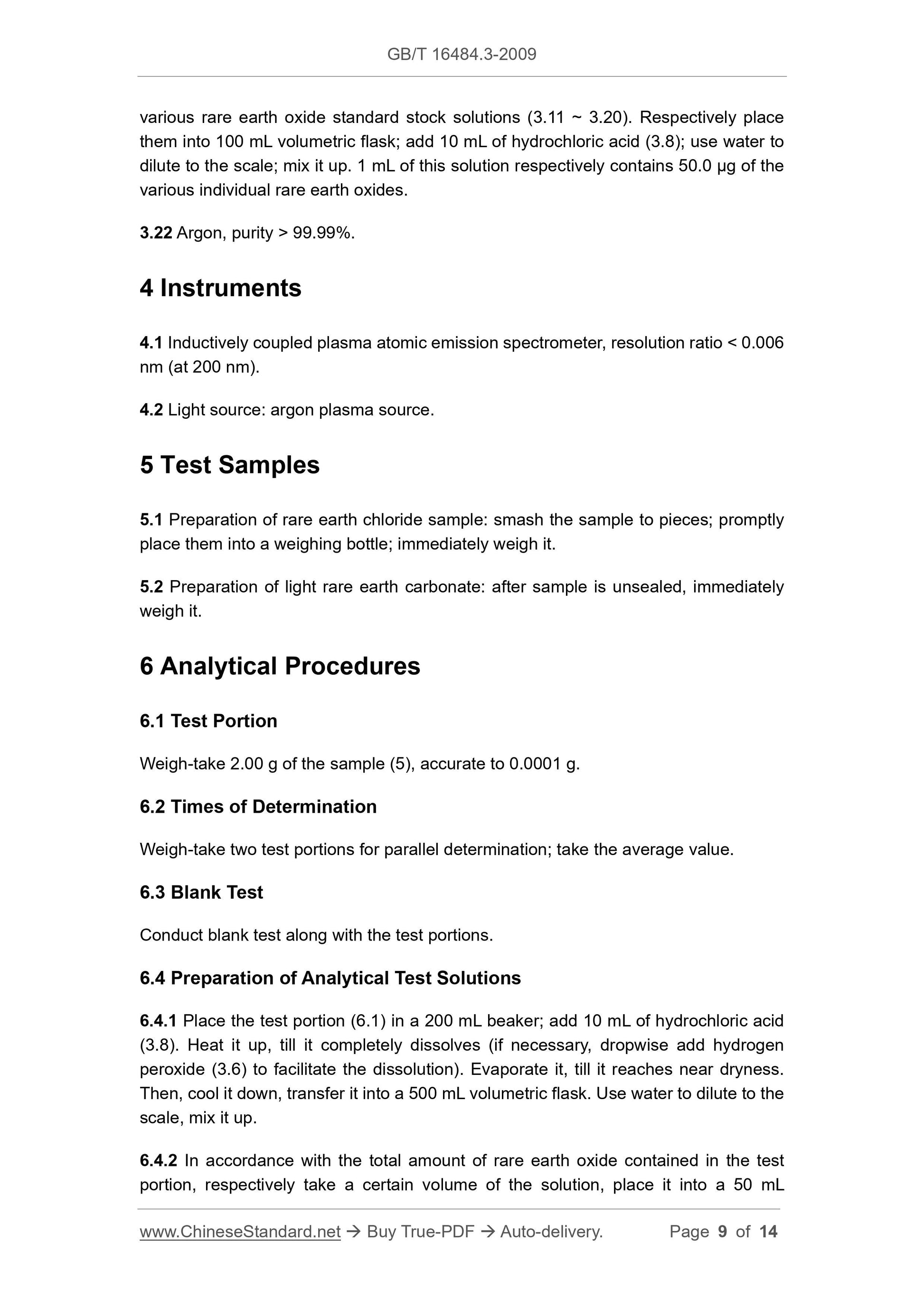1
/
of
6
www.ChineseStandard.us -- Field Test Asia Pte. Ltd.
GB/T 16484.3-2009 English PDF (GB/T16484.3-2009)
GB/T 16484.3-2009 English PDF (GB/T16484.3-2009)
Regular price
$195.00
Regular price
Sale price
$195.00
Unit price
/
per
Shipping calculated at checkout.
Couldn't load pickup availability
GB/T 16484.3-2009: Chemical Analysis Methods of Rare Earth Chloride and Light Rare Earth Carbonate - Part 3: Determination of Fifteen REO Relative Contents - Inductively Coupled Plasma Atomic Emission Spectrometry
Delivery: 9 seconds. Download (and Email) true-PDF + Invoice.Get Quotation: Click GB/T 16484.3-2009 (Self-service in 1-minute)
Newer / historical versions: GB/T 16484.3-2009
Preview True-PDF
Scope
This Part of GB/T 16484 stipulates the determination method for 15 rare earth oxiderelative contents in rare earth chloride and light rare earth carbonate.
This Part is applicable to the determination of 15 rare earth oxide relative contents in
rare earth chloride and light rare earth carbonate. The range of determination is shown
in Table 1.
Table 1
Basic Data
| Standard ID | GB/T 16484.3-2009 (GB/T16484.3-2009) |
| Description (Translated English) | Chemical Analysis Methods of Rare Earth Chloride and Light Rare Earth Carbonate - Part 3: Determination of Fifteen REO Relative Contents - Inductively Coupled Plasma Atomic Emission Spectrometry |
| Sector / Industry | National Standard (Recommended) |
| Classification of Chinese Standard | H14 |
| Classification of International Standard | 77.120.99 |
| Word Count Estimation | 10,145 |
| Date of Issue | 2009-09-04 |
| Date of Implementation | 2010-05-01 |
| Older Standard (superseded by this standard) | GB/T 16484.3-1996 |
| Regulation (derived from) | National Standard Approval Announcement 2009 No.12 (Total No.152) |
| Issuing agency(ies) | General Administration of Quality Supervision, Inspection and Quarantine of the People's Republic of China, Standardization Administration of the People's Republic of China |
| Summary | This standard specifies the rare earth chloride, 15 light rare earth carbonate, rare earth oxide component of the measurement method. This section applies to rare earth chloride, determination of the components of the light rare earth carbonate, rare earth element oxides with 15. |
Share
